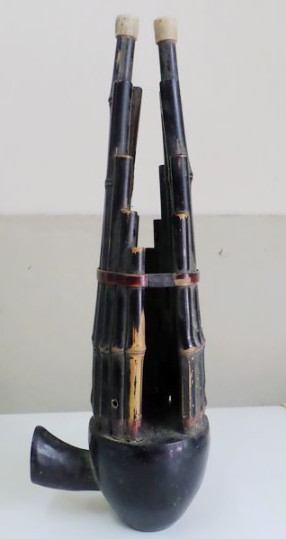Sheng's history
Sheng is one of the oldest musical instruments in China, the first in the world to use free reeds, and the originator of most existing reed instruments in the world. Sheng belongs to the reed musical instrument family, which has the characteristics of clear and elegant pronunciation, soft sound quality and strong singing ability, and has the characteristics of Chinese folk.

In 1978, from the tomb of Marquis Yi of Zeng, Suixian County, Hubei Province, China, several sangs from more than 2,400 years ago were unearthed. This is the earliest sang ever discovered in China.
As far back as the Shang Dynasty more than 3,000 years ago, the prototype of the sheng had already existed in my country.
In the oracle bone inscriptions of the Yin Dynasty (1401-1122 BC), the name "He" (Xiaosheng) already existed. During the Spring and Autumn Period and the Warring States Period, the sheng was very popular. It coexisted with the yu. At that time, it was not only the main instrument to accompany vocal music, but also had the form of ensemble and solo.
In documents from the Warring States Period to the Han Dynasty, two musical instruments of the same kind, Sheng and Ying, were recorded together. In "Zhou Li·Chun Guan": "Master Sheng, ... teaches She Yu, Sheng, Xun, Sui, Xiao, Chi, Chi, Guan." "Sheng" is the official name, and its position is the chief supervisor and teaching Xi Chuyu and Sheng and other musical instruments.
The "Shuowen Jiezi" in the Eastern Han Dynasty records that the yams are 36 springs. A yau with 22 pipes was unearthed from the Han tomb No. 1 in Mawangdui, Changsha, which was used to produce the bass, and the spring was made of copper sheets. From the unearthed pottery figurines of Baixi in the Western Han Dynasty and the portraits of Baixi in stone carvings in the Eastern Han Dynasty, it can also be seen that 竽 occupies an important position in the Baixi band.
During the Sui and Tang dynasties, yu and sheng were still used side by side, but yu was generally only used in elegant music, and gradually lost its role in reminiscent of scriptures in history. Liang Le, Gaoli Le and Qiu Zi Le are all used. At that time, the shapes of Sheng mainly included nineteen, seventeen, and thirteen. In the Tang Dynasty, there were 17-reed Yiguan Sheng. In addition to the 17-reed, two additional Yiguans were prepared. When needed, they were temporarily installed. The early Sheng was made of bamboo, but later changed to copper.
In the Song Dynasty, Yu disappeared, and in the thirteen divisions of Jiaofang, there was only Sheng and no Yu.
During the Ming and Qing Dynasties, there were various shapes of sheng, such as square, round, large and small.
 渝公网安备 50010702504639号
渝公网安备 50010702504639号